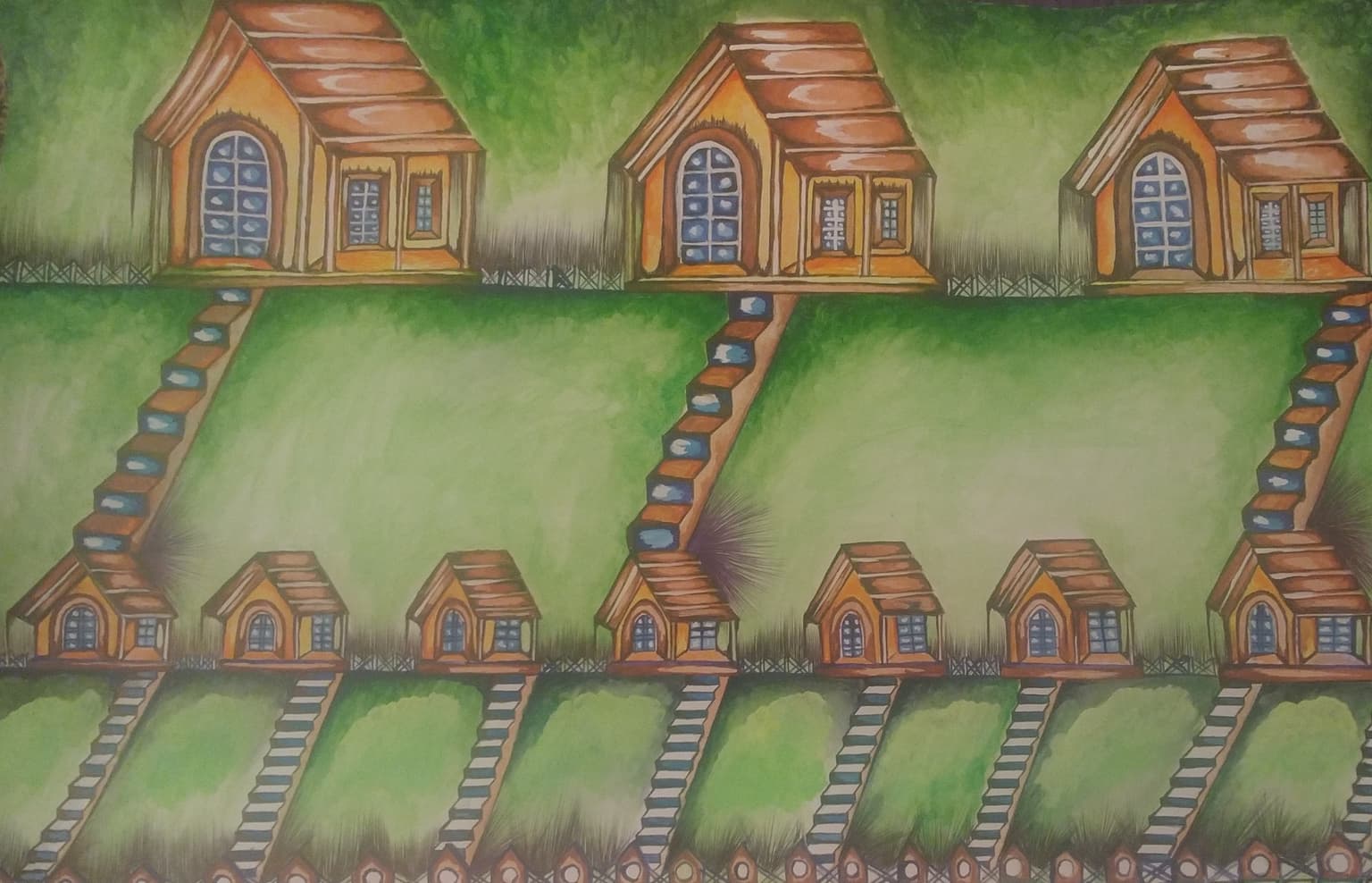Artists
Amrita Acharyya
Senior Lecturer in Mathematics
University of Toledo
Toledo, Ohio, USA
Statement
Whereas painting is my personal hobby, I try to connect it with mathematics for pleasure. I express mathematical structures like Hass diagrams of subgroups and posets, Cayley graphs of groups, and shapes created by various curves through colorful pictures that provide visual representations of the underlying mathematical notions. Colors and various shapes can help create a visual understanding and deeper appreciation of many challenging mathematical ideas, and can even bring immense joy to the inner artist of anyone able to synchronize math and art simultaneously. Toward these ends I use acrylic paints, ball and gel pens, pencils, canvas, acrylic and watercolor sketchbooks.
Artworks

Cayley graph of Baumslag–Solitar group BS(1,3)
40.0 x 40.0 cm
Water color sketch book, acrylic colors, colored ball pens, painting brushes
2023